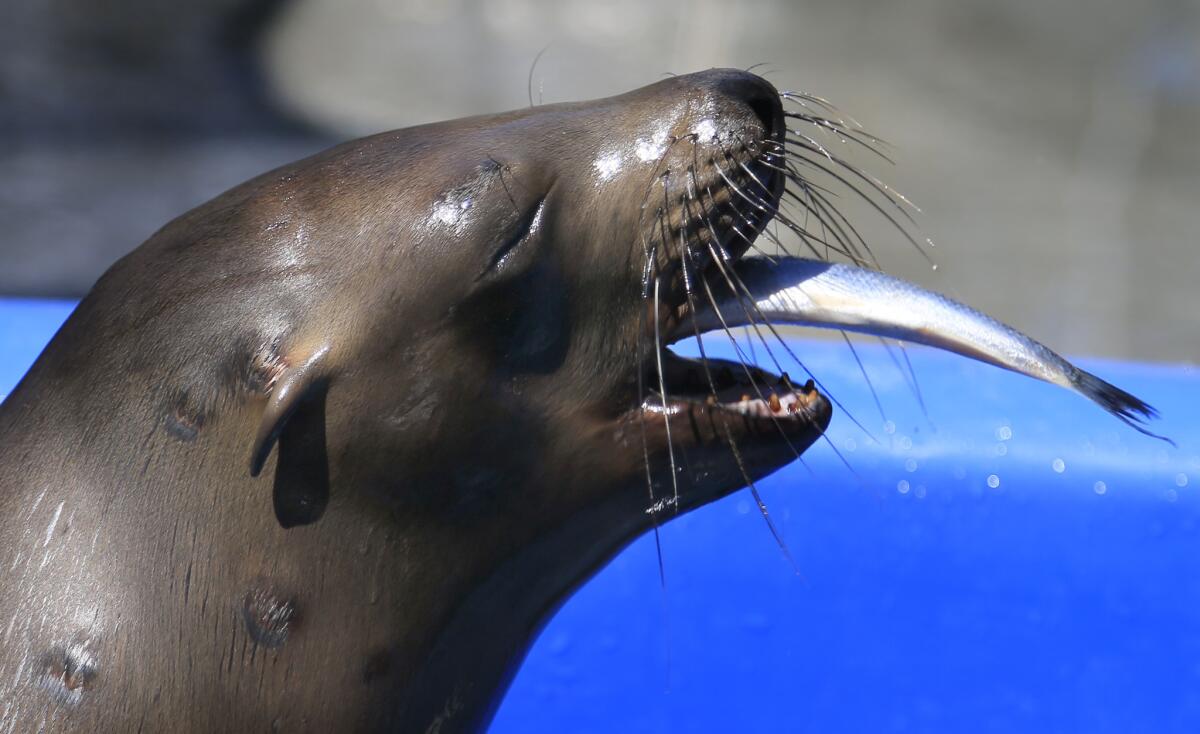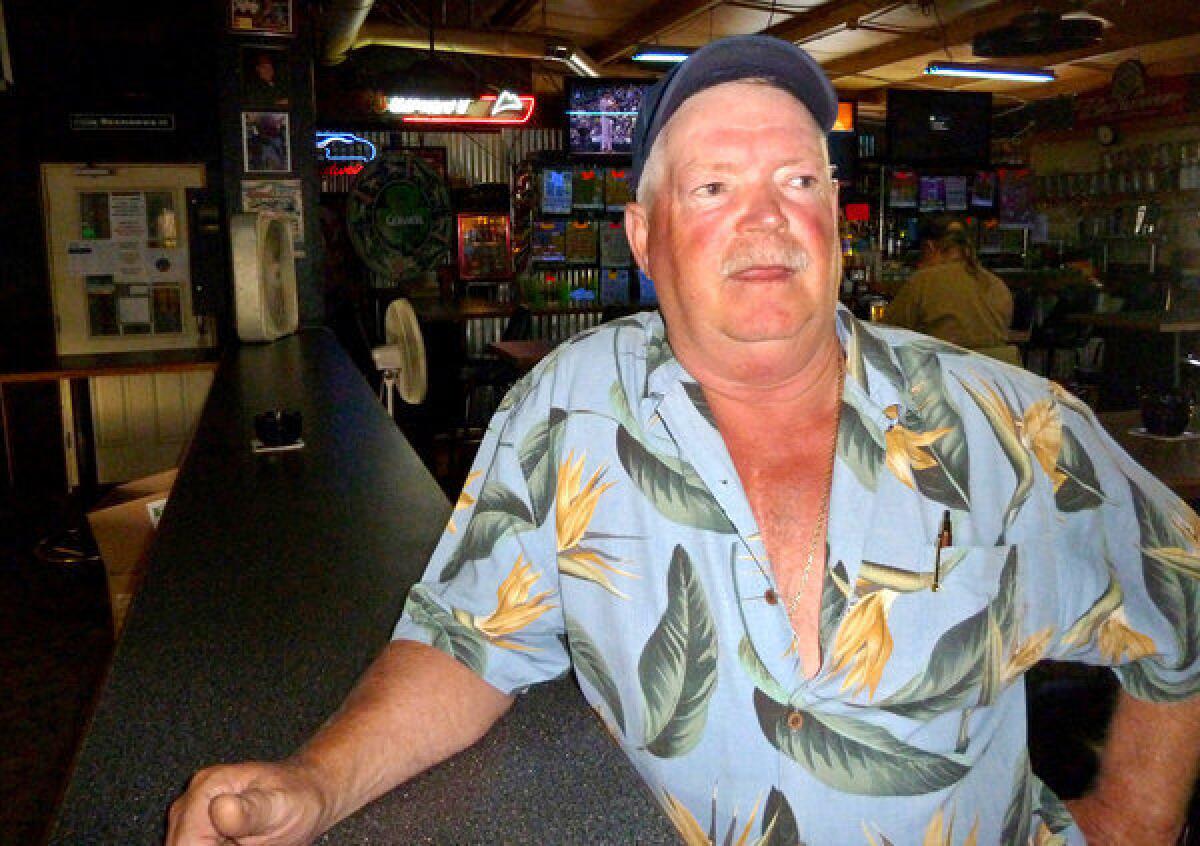Chasing the White House Cezannes
Eighty-five years ago, eight paintings by the Postimpressionist master were bequeathed to the nationâs presidents — works hidden, often in plain sight.
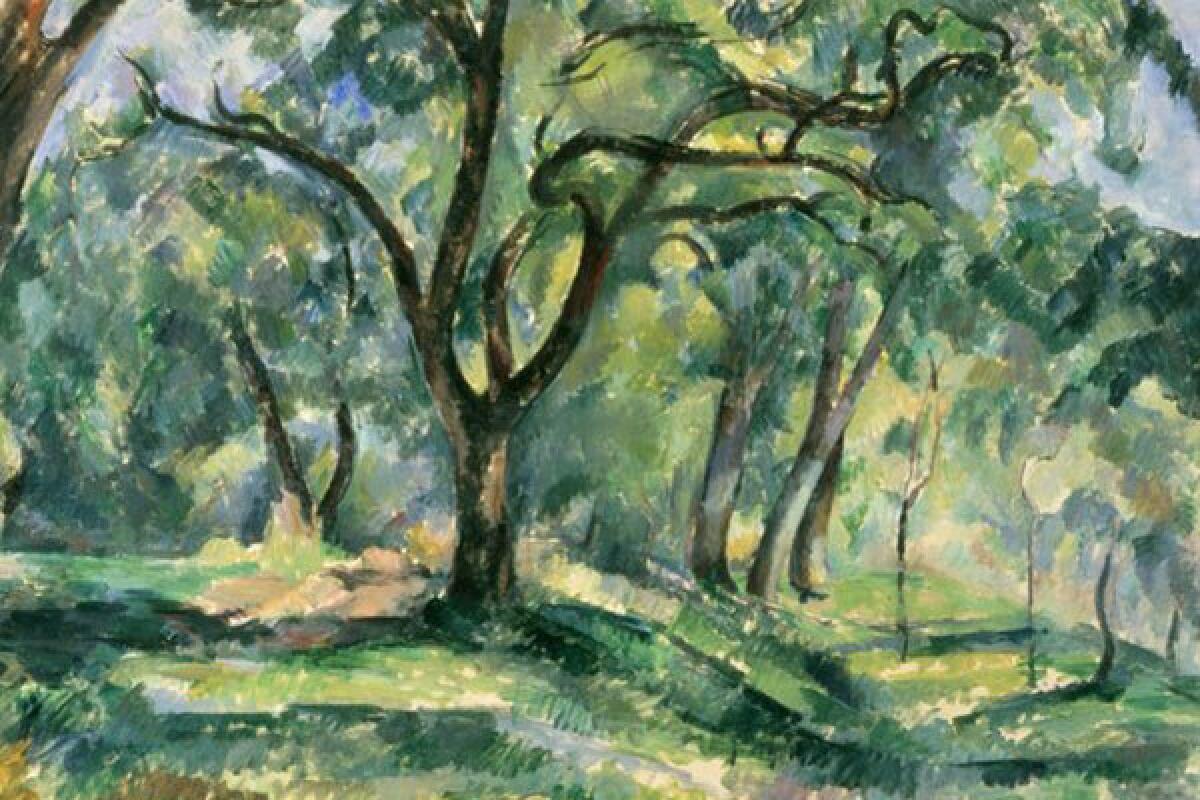
Just a week before astronaut John Glenn's maiden voyage orbiting the Earth in 1962, a record 46 million people sat down before their black-and-white sets to watch Jacqueline Bouvier Kennedy conduct the first televised White House tour.
The mansion's $1.5-million renovation was her debut project as first lady, restoring "an emblem of the American republic," as Kennedy breathily described the stately residence.
Midway through the program, the camera scanned the elegant Green Room. Kennedy walked to a corner and stood beside a marquetry card table â a very fine antique, she explained, that dictated the room's Federalist decor.
Hanging above the table on a silk damask wall was a park-like landscape in faceted brush strokes of green and blue. Paul CĂ©zanne's "The Forest" is a sterling example of the artist's mature Postimpressionist style, widely credited with launching an artistic revolution.
CBS newscaster Charles Collingwood asked Kennedy to point out a few objects of special interest.
"Well," she replied, "there's this sofa, which belonged to Daniel Webster."
Kennedy gracefully glided away, saying not a word about the CĂ©zanne.
As the pair left the room on their way upstairs to the Lincoln Bedroom, they passed a second great CĂ©zanne by the doorway. The vivid landscape of a house by a river was likewise ignored.
Perhaps the omissions represented the public relations savvy of a young but seasoned political wife. She knew the art's importance, having studied French history at the Sorbonne in Paris, but may have thought it impolitic to draw attention to Modern French paintings in an American Neoclassical house.
Or perhaps there was another reason. The first lady was among a handful of people who knew the dark secret of how the paintings came to Washington.

Eighty-five years ago, Charles A. Loeser, an American living abroad, gave the White House eight CĂ©zanne paintings, a bequest that would have been the envy of any museum in the world.
Loeser donated the six landscapes and two still lifes "to the President of the United States of America and his successors in office for the adornment of the White House" and required that the paintings be displayed together, as an ensemble.
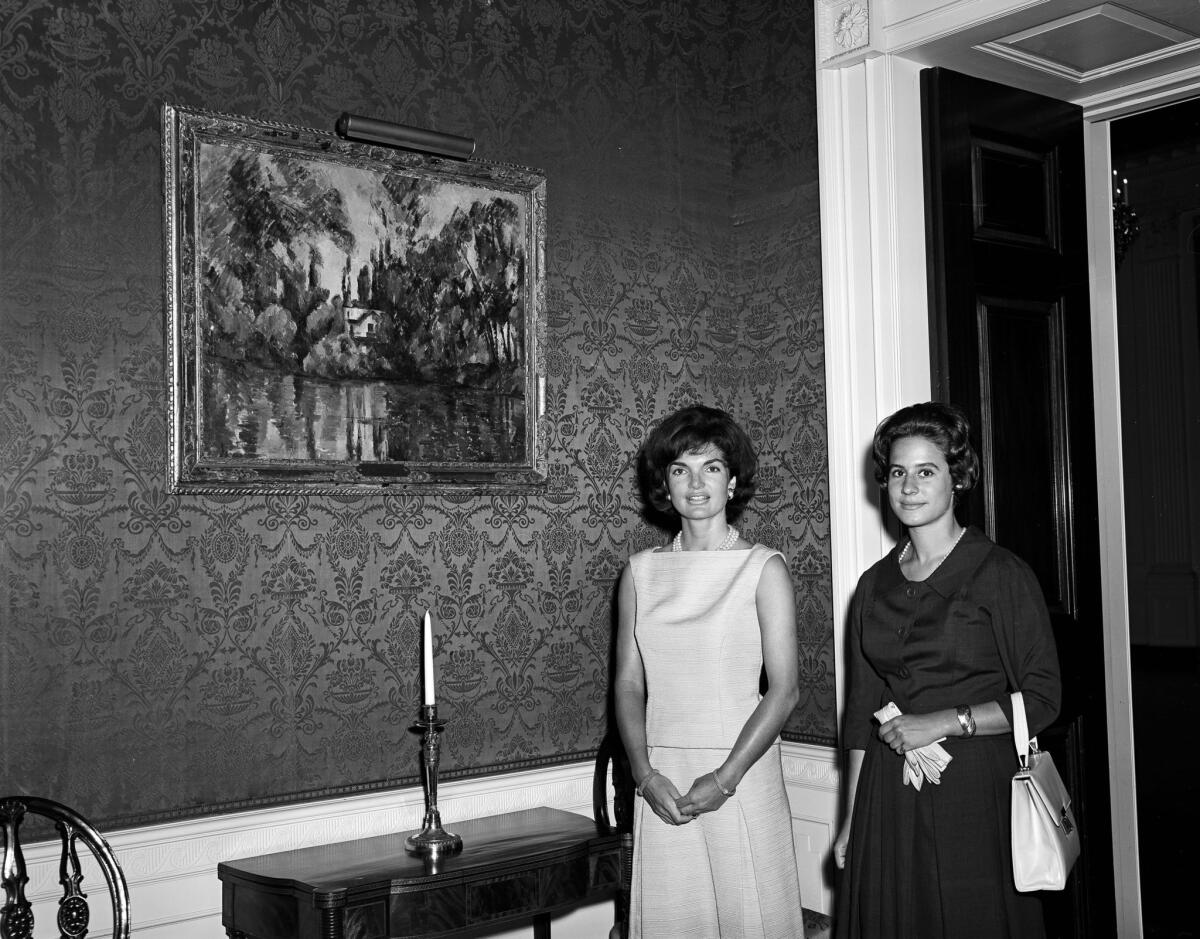
First Lady Jacqueline Kennedy stands with with Philippa Calnan, the donor's granddaughter, in front of CĂ©zanne's "House on the Marne" in the White House's Green Room on June 28, 1961. (Robert Knudsen / White House / John F. Kennedy Presidential Library) More photos
Yet only two of the eight â the two that Kennedy ignored â have spent a significant amount of time inside 1600 Pennsylvania Ave. At least one has never hung there.
The White House's art collection is mostly American-themed art, including fine works by Gilbert Stuart, Jean-Antoine Houdon and John Singer Sargent. The presence of the French masterpieces is little known, even among experts.
Asked recently about them, Paul Schimmel, former museum curator and member of the presidentially appointed Committee for the Preservation of the White House, responded: "What CĂ©zannes?"
The tale of the paintings is a tangled one, and some puzzle pieces are still missing.
But this much, at least, is known: John Walker III, chief curator of the National Gallery of Art, surreptitiously diverted the CĂ©zannes from the White House to boost his fledgling museum's collections. To get them, he later admitted, he bamboozled Loeser's daughter and President Truman.
As Jacqueline Kennedy wrote the curator in her final days in the White House, Walker had even "violated poor Mr. Loeser's will."

Loeser, heir to a Brooklyn department store fortune, was one of CĂ©zanne's first collectors.
He graduated from Harvard in 1888 and moved permanently to Florence, Italy, where he assembled an impressive collection of European Renaissance and Baroque art. In the 1890s, when CĂ©zanne was little-known, Loeser began to buy the artist's paintings. By the time he was done, he had 15.
Loeser died in 1928. In his will, he made three handsome bequests. Two were of Renaissance and Baroque art. Harvard received 262 drawings, forming the core of the Fogg Art Museum's outstanding collection. Sculptures, paintings, furniture and decorated earthenware went to the city of Florence, where they are now housed in the Palazzo Vecchio.
The White House was allowed to choose eight of his CĂ©zannes. Loeser gave his daughter Matilda, then 15, a life interest in the paintings, which meant they would be sent to Washington upon her death â or earlier, if she wished.
Two years after Loeser died, John Walker, a recent art history graduate of Harvard, moved to Florence. His mission was to oversee the transfer of the drawings in Loeser's collection to their shared alma mater, and he met frequently with the collector's widow and the couple's daughter.
Walker saw the CĂ©zannes many times at the Loeser villa. Because he had a copy of Loeser's will, he knew that it outlined a plan to give the paintings to the White House.
Two decades later, Walker, by then curator at the newly created National Gallery, was in New York meeting with Adele Levy, a collector of French Modern art whose brother was among the museum's founding benefactors. He was stunned to discover her most recent acquisition: a CĂ©zanne still life of cherries and peaches from Loeser's collection.
As he would recall years later, Walker believed that Loeser's daughter Matilda had sold the still life illegally. In his interpretation of the will, all 15 CĂ©zannes in the villa at Loeser's death should remain together until the White House chose its eight.
He also sensed an opportunity: He would visit Matilda, persuade her to relinquish her life interest in the paintings and then try to divert the Loeser bequest away from the White House and to the National Gallery. At the time, the museum had no CĂ©zannes.
Walker's account of his scheme is contained in an extraordinary mea culpa, a 14-page brief titled "My Most Infamous Intrigue: The White House CĂ©zannes," which is now kept in the archives of the National Gallery.
In the memo, Walker says he traveled to Florence in 1950 to see Matilda. He quizzed her on whether the CĂ©zannes were being properly cared for and worried aloud that if anything happened to valuable government property, she was liable.
He even claimed that, as National Gallery curator, failure to protect the federal government's art could cause him to "end up in Leavenworth prison" for negligence.
Matilda became frantic. Take the paintings, he says she insisted, "the sooner the better."
Matilda died in 2000 in La Jolla at age 87 after a modest late career as a Hollywood character actress. She left no account of her meetings with Walker.
What Walker called his CĂ©zanne intrigue was first mentioned in a 2008 book, "Mona Lisa in Camelot," by Margaret Leslie Davis. The curator omitted it from his published memoirs; The Times obtained a copy from the National Gallery archives.
Her only direct descendant is a daughter, Philippa Calnan, a former public affairs director at the J. Paul Getty Trust, where a 14th century Paolo Veneziano painting that Loeser once owned hangs in the permanent collection. Calnan recalls that the CĂ©zannes always seemed a burden whenever her mother mentioned them. But, she added, she never knew why Matilda relinquished her interest in them half a century before she died.
The full text is arresting. Walker, who died in 1995, expresses profound regret for his actions. "I still feel ashamed," he wrote. "I behaved abominably and frightened a dear friend nearly to death."
Walker urged President Truman to decline the bequest, and the president took the advice of his National Gallery curator. Then Walker had the CĂ©zannes shipped from Italy to Paris. But Ambassador David Bruce â the former son-in-law of National Gallery founder Andrew Mellon and an old Walker friend â said he had no suitable place to hang them.
So Walker offered to take them. He estimated the combined value of the Loeser CĂ©zannes at as much as $3 million in 1951 â the inflation-adjusted equivalent of $27 million today.

On Jan. 7, 1952, the eight paintings arrived by transatlantic shipment at the National Gallery of Art. Within a year, a new president was headed to the White House and a new ambassador to Paris, further covering Walker's tracks. The splendid paintings hung undisturbed in the museum for nearly a decade â until suddenly two turned up in Jacqueline Kennedy's televised tour.
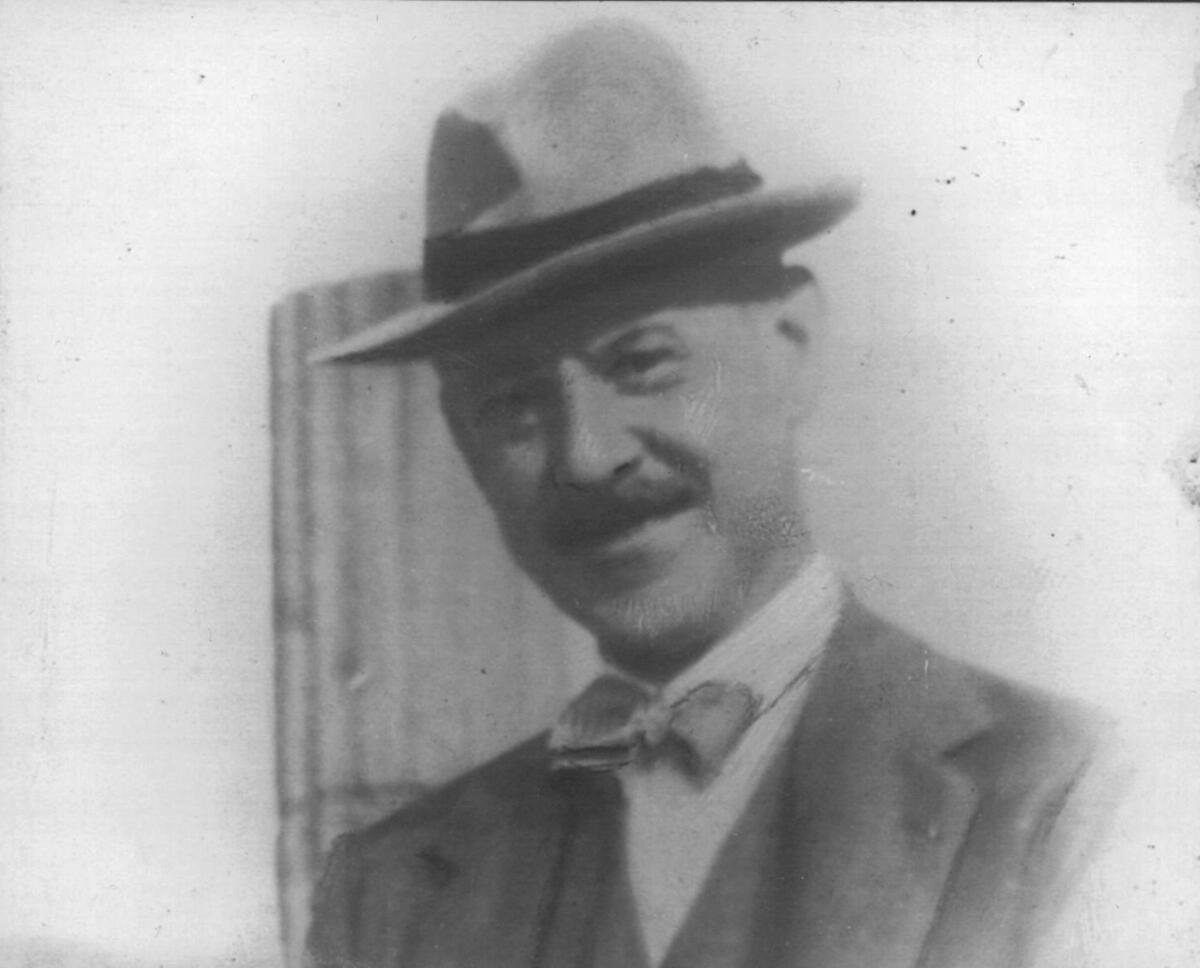
In the 1890s, Charles Alexander Loeser, a wealthy American living in Florence, Italy, became one of the first major collectors of paintings by French artist Paul CĂ©zanne. Loeser bequeathed eight CĂ©zanne paintings to the White House in 1928. (Courtesy Philippa Calnan) More photos
How did the CĂ©zannes get from the National Gallery to the Kennedy White House?
A March 3, 1961, memo from Secretary of State Dean Rusk advised the president of the potential for a lawsuit over the mishandled Loeser bequest. Someone, still unidentified, had blown the whistle on Walker.
In the wake of Rusk's memo, the art-loving, Francophile first lady promptly telephoned the National Gallery. Walker confessed to his scheme.
Kennedy expressed sympathy for the museum's needs and, according to Walker, agreed to share the CĂ©zannes. The two best paintings were sent to the White House, with plans to later rotate the remaining six.
Kennedy hastily invited Matilda to Washington to see that part of her father's bequest was being showcased in the Green Room. Matilda's daughter Philippa, then a 22-year-old art history graduate from Bryn Mawr College, went in her place.
"I was agog," she says now.
The plan to rotate the CĂ©zannes never came to pass. President Kennedy was assassinated, and seven days after the state funeral, as Jackie packed to leave Washington, she reminisced about the paintings in a frank but poignant farewell letter to Walker.
"We all know what you did to poor President Truman â making him sign away the eight CĂ©zannes that were left to the White House," Kennedy wrote. Walker, she added in the eight-page correspondence, which is also stored in the National Gallery's archives, "had violated poor Mr. Loeser's will."
Then she begged, "Please please this letter is always to be secret," underlining the first words twice.
Kennedy wrote that Lady Bird Johnson expressed no interest in the masterpieces that Kennedy so loved. She worried that because CĂ©zanne was foreign and the paintings did not have themes from American history, the Johnsons would remove the stellar works. She implored Walker to help protect her fragile legacy as a force for art and culture in the United States.
Today, three of the CĂ©zannes hang in the National Gallery and five are in the White House family quarters. According to the White House curator's office, the eight have never been installed together as an ensemble, as the Loeser bequest directs.
Matilda's daughter Philippa later embarked on her own museum career, working first at the Los Angeles County Museum of Art and then the Getty. Calnan knew Walker professionally, but she knew none of the history of his role in diverting her grandfather's bequest.
She retired in 1995. Told the story recently, she expressed shock.
"I can't believe it," Calnan gasped as the details were described. "I just can't believe it."
A final irony likewise astonished her: The painting that launched Walker's subterfuge, Adele Levy's CĂ©zanne still life of cherries and peaches, has hung at LACMA for more than 50 years, a gift of Levy's movie-producer son. Calnan had seen it a thousand times at her former place of employment.
Until now, she didn't know that the painting once hung in her childhood home â together with the White House CĂ©zannes.
The biggest entertainment stories
Get our big stories about Hollywood, film, television, music, arts, culture and more right in your inbox as soon as they publish.
You may occasionally receive promotional content from the Los Angeles Times.
